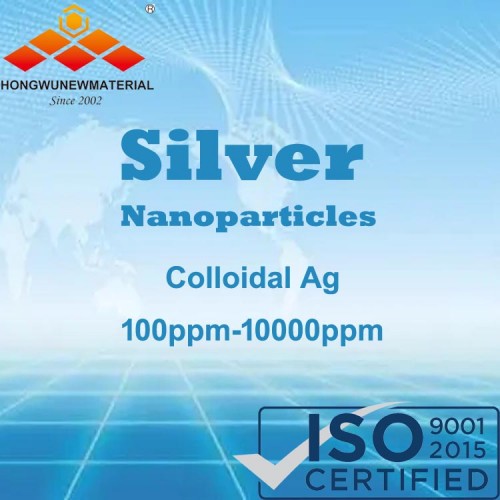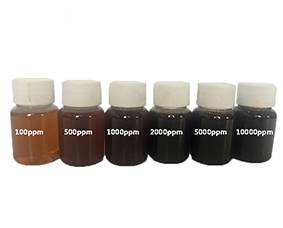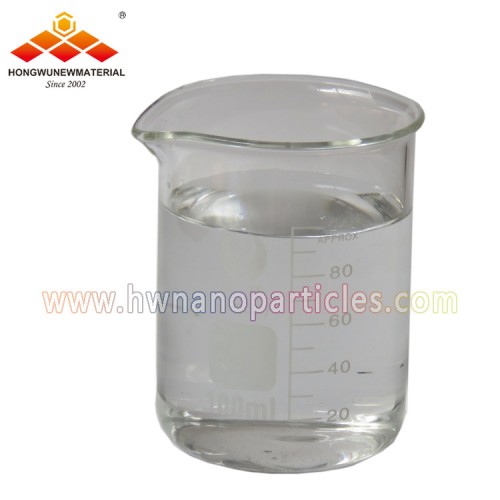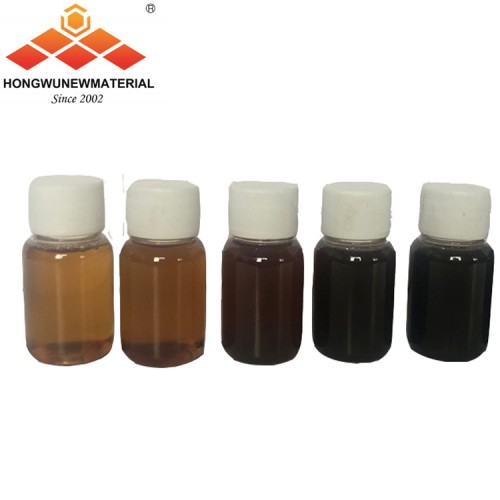
Monodispersed Antibacterial Silver Ag colloid Nano silver dispersion(Colorless & Colored)
| Stock# | Concentration(PPM) |
| HWY01 | 100 |
| HWY02 | 200 |
| HWY03 | 300 |
| HWY05 | 500 |
| HWY10 | 1000 (1‰) |
| HWY20 | 2000 |
| HWY50 | 5000 |
| HWY100 | 10000 (1%) |
| HWY500 | 50000 |
| Colloid Silver Property: | |
| Synonym | Ag colloid; Nano silver dispersions; Colloidal silver nanoparticles; Nano silver water solution. |
| Appearance | Colorless&Colored |
| Customized? | Support customization: Color(colorless&colored), Size, Concentration, Packaging. |
| How to dilute | When the high concentration of nano-silver colloidal is diluted, it must be diluted to a lower concentration with distilled water or deionized water. Do not dilute with ordinary tap water, as this may affect product efficiency. |
| Lead time | about two work days |
| capacity | 3days/ton |
Colored Silver Nanoparticles Colloid
SEM as shown in the right pic
Spherical
Monodispersed
Easy to use
Antibacterial durable
Can kill more than 650 bacteria in a few minutes.
Can be diluted to a suitable concentration with distilled or deionized water.
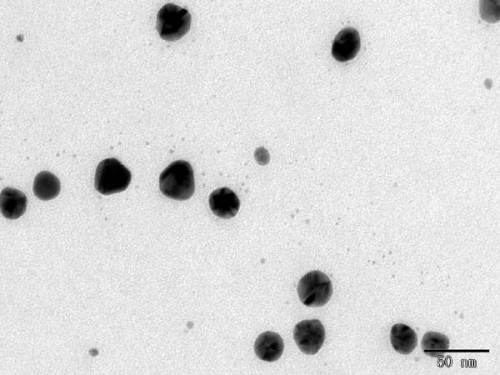
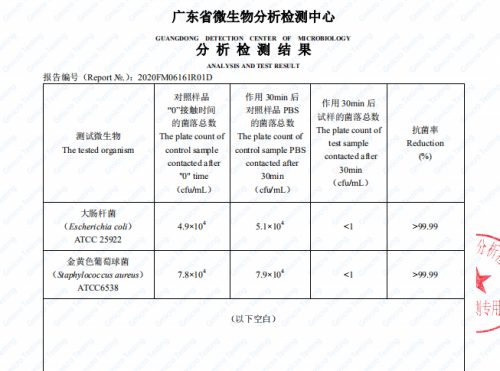
Colorless Silver Colloid
Inorganic material nano-metallic silver is recognized as an ideal antibacterial material. At present, there are many successful cases in coatings, medical fields, water purification systems, textiles, plastics, rubber, ceramics, glass and other bactericidal coatings, deodorization, antibacterial film industry, have opened a broader market for antibacterial application of silver nanoparticles.
Compared with traditional silver antibacterial agents, the silver nanoparticles prepared by nanotechnology not only have more significant antibacterial effect, but also have higher safety and longer lasting effect. As an antibacterial agent, nano silver has large specific surface area and small particle size, which is easy to contact with pathogenic microorganisms and can exert its maximum biological activity. Most nano composite materials used in antibacterial food packaging are based on silver nanoparticles, which shows its stronger antibacterial activity. The researchers doped the non-woven fabric with nano-silver and tested its antibacterial properties. The results show that the non-woven fabric without nano-silver immersion has no antibacterial property, and the non-woven fabric soaked in 500ppm nano-silver solution has excellent antibacterial property. The e polypropylene water filter with silver nanoparticles coating has good inhibition effect on EScherichia coli cells.
Conductive Composites
Silver nanoparticles conduct electricity and they are easily dispersible in any number of other materials. Adding silver nanoparticles to materials such as pastes, epoxies, inks, plastics, and various other composites enhance their electrical and thermal conductivity.
1. High-end silver paste (glue) :
Paste (glue) for internal and external electrodes of chip components;
Paste (glue) for thick film integrated circuit;
Paste (glue) for solar cell electrode;
Conductive silver paste for LED chip.
2. Conductive Coating
Filter with high-grade coating;
Porcelain tube capacitor with silver coating
Low temperature sintering conductive paste;
Dielectric paste
Silver nanoparticles have the ability to support surface plasmons, which results in unique optical properties. At certain wavelengths, surface plasmons become resonant and then absorb or scatter incident light so strongly that individual nanoparticles can be seen using a dark field microscope. These scattering and absorption rates can be tuned by altering the shape and size of the nanoparticles. As a result, silver nanoparticles are useful for biomedical sensors and detectors and advanced analysis techniques such as surface-enhanced fluorescence spectroscopy and surface-enhanced Raman spectroscopy (SERS). What’s more, the high rates of scattering and absorption seen with silver nanoparticles makes them particularly useful for solar applications. The nanoparticles act like highly efficient optical antennas; when Ag nanoparticles are incorporated into collectors, it results in very high efficiencies.
Silver nanoparticles have excellent catalytic activity and can be used as catalysts for many reactions. Ag/ZnO composite nanoparticles were prepared by photoreduction deposition of precious metals. The photocatalytic oxidation of gas phase n-heptane was used as a model reaction to study the effects of the photocatalytic activity of samples and the amount of noble metal deposition on the catalytic activity. The results show that deposition of Ag in ZnO nanoparticles can greatly improve the photocatalyst activity.
The reduction of p - nitrobenzoic acid with silver nanoparticles as catalyst. The results show that the reduction degree of p-nitrobenzoic acid with nano-silver as catalyst is much greater than that without nano-silver. And, with the increase of the amount of nano-silver, the faster the reaction, the more complete the reaction. Ethylene oxidation catalyst, supported silver catalyst for fuel cell.
Due to its superior properties, silver nanoparticles have a broad prospect in the field of biomaterials, especially in biosensors.
The silver-gold nanoparticle was introduced into the immobilization technology of glucose oxidase (GOD) of glucose sensor. The experiment proved that the addition of the nanoparticle increased the adsorption capacity and stability of the enzyme, while improving the catalytic activity of the enzyme, so that the sensitivity of the current response of the enzyme electrode was greatly improved.


